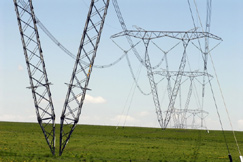Sustainable development
Praise for SA's energy policies
'Fast growth' countries
South Africa is identified in the report as one of the top performers in the "emerging" or "fast growth" country category, on its way from being a lower income to a higher income country, and on the verge of crossing the line from the net energy importing to the net energy exporting category. It is South Africa's energy equity policies, however, which merited special attention in the report. While the country does not score highest for equitable access to energy – given how recently it began implementing its post-apartheid policies – its national electrification programme has transformed the level of electrification the country, raising it from 36% to 90% of urban households, and 12% to 52% of rural households, since 1994. To achieve this, South Africa had to overcome a number of hurdles, including formulating the design and construction process, perfecting the technology, and addressing social issues such as affordability.Logistical hurdles
"The project management aspect was the key component in the construction process," the report notes. "In the course of one year, over 200 individual electrification projects had to be planned, designed and executed. "A connection had to be made every 30 seconds for five years. A pole had to be placed in the correct position every 10 seconds. Two hundred metres of cable had to be strung and attached every minute. "It was the introduction of a detailed planning, design and project management process, as well as detailed standard technical building blocks and indicators, that have made the achievement of 1.5-million connections in five years, with an accompanying 50 percent reduction in cost, possible." Besides the reduction in cost per connection, the report states, South Africa's electrification programme has brought major health benefits through "fewer paraffin burns and poisoning, as well as vaccine refrigeration, water pasteurisation and a decrease in respiratory disease." South Africa still has a long way to go in reducing its historical dependence on coal, which still makes up around 72% of the country's primary energy mix, the rest comprising oil (12%), gas (3%), nuclear (2%) and renewable energy sources (11%). The report notes, however, that the National Energy Regulator of South Africa has approved renewable feed-in tariffs "that should encourage the use of renewable energy sources and increase energy security. "Further, in a bid to reduce its carbon dioxide emissions, South Africa has introduced carbon emission reduction credits, and is developing a carbon storage atlas." SAinfo reporter
Would you like to use this article in your publication or on your website? See: Using SAinfo material

Electricity pylons, KwaZulu-Natal province (Photo: Graeme Williams, MediaClubSouthAfrica.com)
Related links
Related articles
- 'Solar park' on the cards for SA
- Sasol boost for solar energy research
- R100m AfDB boost for clean energy
- Irish firm in SA wind farm venture
- South African eco-street lights for India
- SA, Denmark sign wind energy deal
- Clean energy firm attracts US investor
- SA adopts 'bold' climate change policy
- Sappi reduces its carbon footprint
- Penalties for excessive energy use
- Eskom's solar power incentives
- Norway to step up climate aid
- Joburg, Clinton climate initiatives
- SA pilots 'green' traffic light
- SA looks to nuclear power
- $40m wave energy plant for SA
- SA launches solar heater project





